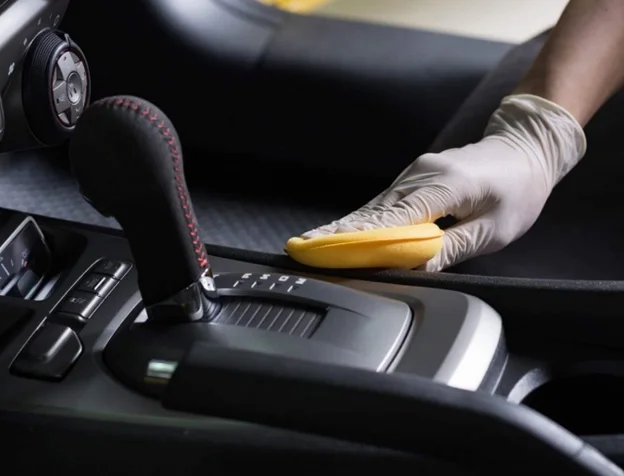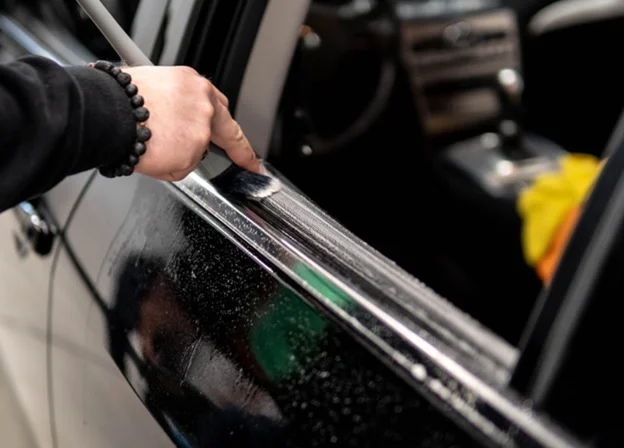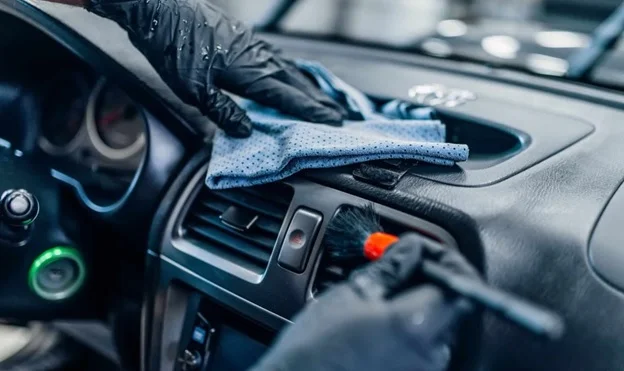If your car interior is littered with dust, stains and obnoxious smells, time for a detailed interior cleaning. Cabins are where most of us spend our time, and an interior that’s squeaky clean is good to look at and can prevent common health issues lurking deep down. Bacteria, mould and fungi are just some of the nasties that are hard to spot. And the damage contaminants can cause over time is why thorough interior detailing pays.
But before splurging hundreds on a pro to do the job for you, consider the vast range of car interior detailing supplies. These let you save some serious cash and detail your car in your time and to your high standards. You’ll know exactly what’s done, and what needs more attention.
Why Is Interior Detailing a Must?

Tending to every nook and cranny inside the car has obvious benefits beyond looks. Interior detailing digs deep to remove ingrained dust, grime, food remnants, finger and paw prints, spills and nasties that have been accumulating over time. These can be hard on your health, especially for anyone with respiratory conditions. That same layer of grime can become abrasive and start eating into seat cloth, soft and hard plastics, delicate trim pieces or wreak havoc with the electrics.
Specially formulated products additionally deal with surface scratches and minor dents and retain colour in the cabin parts directly exposed to the sun. Detailing then isn’t just about appearances, it also creates a welcoming interior and prevents minor problems from spiralling out of control.
Gathering Necessary Detailing Products
Detailing your car interior saves money, considering you only need cheap basic gear. Of course, you can make the odd splurge on a few optional extras. To get professional-level results, consider the following items:
- All-purpose interior cleaner and spray bottle
- Microfibre clothes and wipes
- Mitts and sponges
- Detailing brushes (or brush kits)
- Bucket
- Duster
To tend to different surfaces and trims, figure out the materials in your car. Use leather cleaning solutions to remove dust and grime from areas like steering wheels, gear knobs or leather seats, wood cleaners for wood trims, carpet cleaner to tend to crumbs, stains and smells for the floor mats and carpet, and glass cleaner to get rid of fingerprints, cigarette smoke, or paw marks.
Also, have a decent wet and dry vacuum with attachments ready for tight spots. This is the largest expense, but helps get the best results. Once all areas are sprayed, wiped and vacuumed, apply the corresponding protector or dressing to keep surfaces dust-free for longer and protect against fading from UV rays. The last piece of inexpensive kit is air fresheners or deodorisers in your favourite scent.
Getting Started

Detailing vehicles with car interior detailing supplies applied in stages offers the best finish. Once you’ve gathered all your gear, follow up by getting rid of all unnecessary items, including shopping bags, tissue boxes, forgotten water bottles, kid toys, and spare change. Then inspect under the seats, the door pockets, cubby holes, the glove box and other storage areas and remove collected rubbish. With that done, follow the stages below:
Remove the Mats
Floor mats and carpets absorb and hold liquids, food crumbs, mud, gum, and anything you bring from the outside on your shoes. They’re often the dirtiest part of the car, but being lower down often gets forgotten. Remove all mats, give them a good shake, spray them with general-purpose (or rubber/carpet) cleaner, hose them down and hang them to dry. If you have a pressure washer (ideal for exterior detailing) better still. Any ingrained grime can be dealt with brushes.
Dealing With Seat Fabric
You can clean the seats in two different ways. Either remove them entirely to get better access to the floor or detail them as they are. Start by vacuuming to get off surface dust, then repeat to deal with ingrained nasties. Use the attachments to get around the rails and tighter spaces, and have brushes ready if you have pets or need to remove hair.
Spray the seats with general-purpose shampoo or fabric cleaner (or use a leather solution for leather seats) to break up hardened stains and spills. For damaged leather, use a leather protectant or a repair kit to prevent further cracking or fading.
Dash and Door Trim
Dashes can get tricky, as you’ll not always know what material you’re dealing with. Here there’s a bit of everything, with soft-touch plastics, rubber, and leather inserts dominating in most cars. The best product when in doubt is an all-purpose interior cleaner, sprayed in ample amounts.
If you know the material, then the appropriate cleaner gets better results. Tend to minor scratches using rubber or vinyl cleaner, spray wood cleaner on wood (natural or otherwise), and deal with plastic damage by spraying plastic protectant. Also, pay attention to dust lining the vents with soft-bristle brushes and swabs for corners. Follow up with the doors, making good use of microfibre cloths when wiping down and brushes for stubborn stains. For cars parked on the street, also consider spraying some UV protectant to prevent cracking.
Getting Into Detail

Steering wheels, gear knobs and handbrake sleeves are some of the forgotten parts that get left out but collect the most grime. Sweat, skin particles and other nasties can be hard to remove. Use leather cleaner or balm on a microfibre cloth for leather car parts, or plastic cleaners for lower trims.
Go onto cleaning the glass, including the windscreen, sun visor and rear-view mirrors and windows. If the car has tinted windows, ensure the glass cleaner won’t cause wrinkling. Microfibre cloths should get most stains, fingerprints and dust out, but again, brushes work where cloths or mitts won’t.
Finishing Up
A comprehensively detailed interior requires a few final touches. Complete the process by spraying protectants for the appropriate materials and surfaces and choosing air fresheners and odour removers to deal with stubborn smells. To get rid of the remaining microbial growth, use air conditioner sanitiser.
Detailing the interior is often done after a good exterior detail, but dirtier cabins and unsightly stains or spills should be dealt with promptly. Car owners can shop for separate cleaning and detailing products, or save some cash by opting for packaged kits containing everything you need.
For more related information, explore here.









